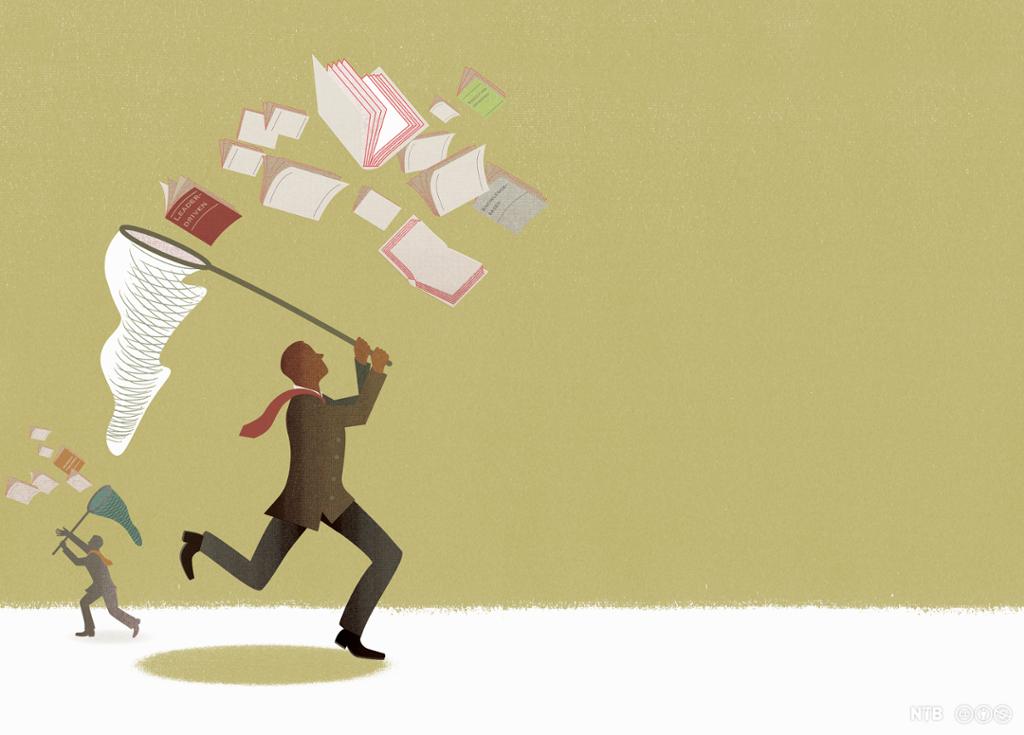Reading Academic Texts

Academic texts have a title, a table of contents, an introduction, a discussion of a specific thesis, and a conclusion. Academic texts also include references and a source list. In some publications, you will also find an abstract that sums up the most important information found in the text.
In order to be as precise as possible, academics and experts often use specialised vocabulary. People who have studied the field will be familiar with this vocabulary, so it aids clarity, precision, and understanding. However, this kind of specialised vocabulary can make a text difficult for outsiders to understand. The texts are often also quite long, and illustrations are used sparingly.
To read and understand requires effort and time. Engage with the material, ask questions, be curious! You may not understand everything, but with practice you will understand more and more.
What is the text about? Read the title carefully, then move on to the table of contents. If an abstract of the text is included, study it carefully. This will give you a quick overview of what the text is about.
Next, you should read the introduction. It will usually describe the topic and thesis of the text and the method used to explore these.
Read the conclusion. This will sum up what the author has discovered about the topic and thesis.
When you have looked at the table of contents, the introduction, and the conclusion, you already know a great deal about what the text is about. Take a moment to write down questions you expect that the rest of the text will answer, or write down the main points that you think the text will address.
Are you looking for specific information in the text, or have you been asked to read the whole text carefully and learn as much as you can from it?
If you are looking for specific information from the text, you may begin by using a skimming and scanning strategy. This means that you read through the text quickly while you look for key words that you know relates to the topic you want to find information about. Once you have found these key words or phrases you may read those paragraphs again more carefully, taking notes.
If you are reading the whole text, you should slow down and concentrate. When you have read a paragraph, stop and think about what you just read. Don't stop to look up difficult words right away; read on and see if you understand the meaning from the context. If you can't, then go back and look up words before reading the paragraph again. Taking the time to take notes or think about what you have just read, will aid both your understanding of the text and your memory of it.
A good way to check that you have understood a text is to explain it to someone else. Try to explain what you have read in a simple and easy way. Make sure you do not use any words that you do not understand or cannot explain yourself. Explaining the text to someone else will reveal gaps in your understanding. Are there parts that are unclear? Is there information missing that makes it impossible for the other person to understand what you are trying to say?
If you are going to use information from an academic text in your own work, it is important that you do not plagiarise. If you are using direct quotations from the text, it is important that you use quotation marks, insert a reference, and include the text in your source list.
If you have changed the sentences, but the structure and ideas remain the same as in the academic text, you must include a reference in addition to including the text in your source list. Since you are not quoting directly, you do not use quotation marks.
To make the material your own, the best way is to work only from your notes. This will help you phrase yourself independently and combine information in new ways. Working from your notes can also help you avoid accidentally copying the text. Even when you succeed in creating your own text, the academic text must still be included in your source list to show where your information originally comes from.